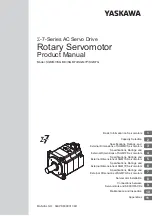
2
Assembly and installation
BU 0500 GB
Subject to technical alterations
25
L1 / L
L2 / N
L3 / -
PE
M
3~
X2 -
PE U V W +B -B -DC
X1 -
PE L3 L2 L1
External
Braking
resistor
X3 -
4 3 2 1
2.8 Electrical connection of power unit
The terminals of the mains connection and the multi-function relay (X3)
are located on the top of the frequency inverter.
The motor and brake resistor connections are located on the base of
the unit.
The control terminals can be accessed from the front of the frequency
inverter. For this the terminal cover (below the TU insert) must be
pushed downwards, and can then be removed. The connecting
terminals are then easily accessible.
Before connecting the device,
the following must be observed:
1. Ensure that the voltage source provides the correct voltage and is
suitable for the current required (see Section. 7 Technical data).
2. Ensure that suitable circuit breakers with the specified nominal
current range are installed between the voltage source and the
inverter.
3. Connect the line voltage directly to the line terminals
L
1
-L
2
/N-L
3
and
the earth
(according to the device).
4. A four-core cable must be used to connect the motor. The cable is
connected to the motor terminals
U - V - W and the earth.
5. If screened motor cables (recommended) are used, the cable
screening must also be connected to a large area of the metallic
screening angle of the EMC Kit (Section 2.4), however, at least to
the electrically conducting mounting surface of the control cabinet.
NOTE:
Note:
when
using
specific
wiring sleeves
, the maximum
connection cross-section can be reduced.
Screwdriver:
A cross-head screwdriver (Pozidrive/Supadrive size 1) is used for connecting the
power unit
NOTE:
If synchronising devices or several motors are connected in parallel, the frequency inverter must
be switched over to linear voltage/frequency characteristic curves,
Æ
P211 = 0 and P212 = 0.
NOTE:
he use of shielded cables is essential in order to maintain the specified radio interference
suppression level. (See also Chapter 8.4 EMC limit value classes)
ATTENTION:
This device produces high frequency interference, which may make additional suppression
measures necessary in
domestic environments.
(Details in Section 8.3/8.4)
















































